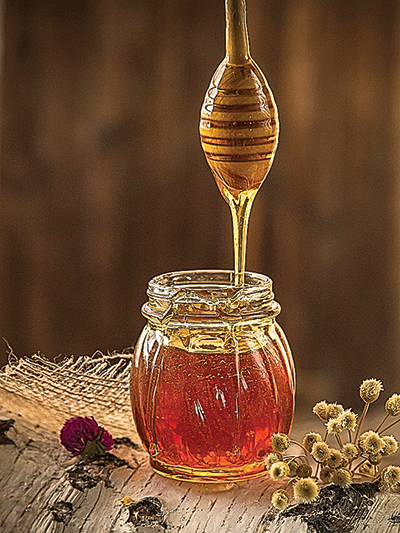
Melondy Phillips
Staff Writer
Beware Fake Honey
Several undercover studies, of randomly selected honey being sold, have been conducted which tested the authenticity of the product. The results were shocking.
“The Department of Science and Technology-Philippine Nuclear Research Insti- tute (DOST-PNRI) has learned that 80% of the honey products sold in the markets are not made of pure honey but rather sugar syrup.
“According to Bautista, 82% or 62 out of 76 honey brands that were found to be adulterated were composed of 95% C4 sugar syrup.
“Meanwhile, 75% of local honey brands sold either in groceries or souvenir shops and 87% of local honey products sold online were not made entirely of honey.” gmanetwork.com
“Sugar syrup made from C4 and C3 sugars are direct adulterants which mean they are added directly to the honey to increase its quantity.
“Sugar syrup and honey are both sweeteners but differ in health profile: C3 and C4 plants have natural sugar, however, when they are used to make sugar syrup through harsh processing, it becomes toxic.” bharathoney.com
By adding sugars and syrups to honey, distributors can sell more for a lower cost while still making a good profit, but this hurts the local beekeepers and prevents the buyer from getting the “good stuff” they would be getting from raw honey.
Although the body may or may not react the same way to high fructose corn syrup (fructose and glucose) as it does to the sugars in honey (naturally balanced fructose, glucose, and sucrose), corn syrup does not contain the same enzymes, minerals, proteins, vitamins and acids that raw honey does.
A study from the University of Utah has proven that corn syrup is more detrimental to health than white sugar. Glucose is absorbed by the blood steam while fructose is metabolized by the liver and creates fatty acids which accumulate in the muscles and liver. This build-up of fatty acids may cause insulin resistance, sluggish thyroid, gout and increase blood pressure among other things.
An article by ProgressiveHealth.com stated, “In the 2013 study, researchers found that when mice were fed 25 percent of their calories from added fructose and glucose, females died at twice the normal rate. Male mice, given the same diet, were 25 percent less likely to reproduce or fight for territory. The new study narrowed the previous results even further by separating the types of sugar given to mice. Some received 25 percent corn syrup while the other group received 25 percent table sugar.
Female mice had a 1.87 higher rate of death when given corn syrup and produced just over 26 percent fewer offspring. Males acted the same no matter what kind of sugar they ate, suggesting that sugar of any kind may be worse for males than females. …”
“In fruit and other natural foods, fructose is used as a “reward” for eating nutritionally dense fruits. Because only a small number of natural foods contain fructose, our bodies are not equipped to handle large amounts of these foods. When a diet high in fructose is consumed, studies show that the liver becomes overloaded and starts storing the fructose as fat rather than using it. This can lead to a whole host of problems including liver disease, cancer, insulin resistance, diabetes, heart disease, a sluggish metabolism and obesity.”
Know your honey source
Some types of honey crystalize more easily than others, especially when stored in a cool location. A gentle heat must be used to dissolve these crystals. My favorite method is using a toaster oven on the “warm” setting. My toaster oven warm setting hovers around 95 degrees, which very slowly warms the honey, dissolving the crystals, without overheating the nutrients.
I have also used a double boiler. I add water to the bottom container of the double boiler, set the top container on it, fill the top about halfway up with warm water, and bring the bottom pot up to a simmer. I then place the jar of honey in the water in the top half. Using a thermometer in the top container of water and turning the stove top on or off occasionally helps keep an evenly moderate temperature to slowly melt the honey crystals.
Another way to safely dissolve honey crystals is to bring a pot of water up to boil, remove it from the heat and allow the water to cool down a bit. Then place the honey jar into the warm water.
Using a low temperature crockpot or slow cooker, filled with water a- bout three-fourths the way full and set to its lowest setting (should not be more than 120 degrees), place the honey jar in the water. Keep a check on the water temperature with a thermometer.
For those who have high volumes of honey to sell, a honey warming bee blanket may be right for you. This electric device maintains a constant temperature similar to what would be in the hive.
Part 3 of 6


